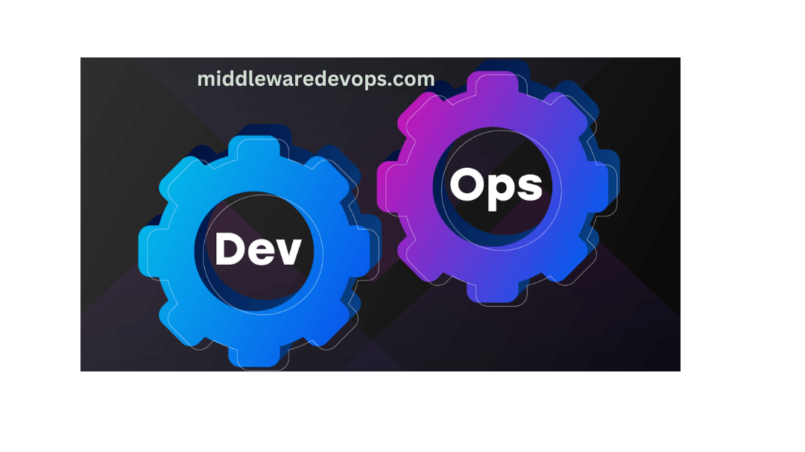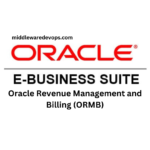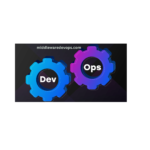Overview:
If you’re an IT professional and haven’t yet come across the term DevOps, it’s essential that you do so. Obtaining certification in DevOps can be immensely helpful if you aspire to work in this field.
DevOps has become the preferred approach for many prominent IT companies to propel themselves forward. This article will delve into the fundamentals of DevOps, and the following are the key areas that will be explored:
- What is DevOps?
- History of DevOps
- DevOps Tools and stages
- Who is a DevOps Engineer?
What is DevOps?
The term DevOps is a portmanteau of “development” and “operations.” It refers to a software development practice that integrates all phases of development, testing, deployment, and monitoring into a unified team.
DevOps aims to reduce the system’s lifecycle by delivering updates, fixes, and new features in a shorter timeframe while maintaining the system’s reliability.
Continuous development, integration, testing, deployment, and monitoring are integral parts of the DevOps approach, contributing to the software’s overall quality. The software development process also involves specific stages, such as continuous development, continuous integration, continuous testing, continuous deployment, and continuous monitoring.

History of DevOps
Prior to the adoption of DevOps, there were two primary approaches to software development: the Waterfall model and the Agile methodology.
1. Waterfall Model
The Waterfall model is a sequential software development process that follows a linear, top-down approach.
As per the Waterfall model, the software development process starts with a Requirements Gathering and Analysis phase where the client’s requirements are collected. After that, a thorough analysis of the requirements is done to understand the scope of the project.
After the Requirements Gathering and Analysis phase in the waterfall model, the next stage is the Design phase. Here, the software development team prepares a blueprint of the software. This phase involves planning the overall structure, architecture, and layout of the software, including its user interface, data models, and functionality. The design phase aims to ensure that the software meets the client’s requirements and specifications, while also being efficient, scalable, and maintainable.
Once the application has been designed, it can be implemented by a team of developers who will code and finalize each component of the application.
During this phase, the application is developed and subsequently tested. Testing can include a range of assessments such as unit testing, integration testing, and performance testing.
Once all tests on the application are completed and verified, it can be deployed to the production servers.
The final phase is Maintenance, where the application’s performance is continuously monitored and any performance-related issues are addressed.
Advantages of the Waterfall Model:
The advantages of the Waterfall Model include:
- Clear and defined stages: The waterfall model provides a clear and structured approach to software development. Each stage has a defined set of inputs and outputs, making it easy to track progress and identify potential issues.
- Well-suited for small projects: The waterfall model is well-suited for small projects with well-defined requirements. Since the requirements are defined upfront, there is little room for changes or misunderstandings later in the project.
- Predictable timeline: The waterfall model provides a predictable timeline for the project. Each stage has a set timeframe, which makes it easier to estimate the overall project timeline.
- Easy to manage: The waterfall model is easy to manage, as each stage has a clear set of objectives and deliverables. This makes it easier to manage the project, as each stage can be tracked and monitored.
- Clear documentation: The waterfall model requires clear documentation for each stage of the project. This documentation can be useful for future reference and can help in maintaining the project after it is completed.
- Cost-Effective: Since the requirements are well-defined and there is little to no need for flexibility or changes, the Waterfall Model can be very cost-effective. This is because it is easier to estimate costs and allocate resources when there is a clear understanding of what needs to be done.
Disadvantages of Waterfall Model:
Here are some of the disadvantages of the waterfall model:
- Lack of flexibility: The waterfall model does not allow for any changes in requirements once the development process has started. This makes it difficult to incorporate any new features or changes during the development process.
- Late defect detection: Testing is done only after the development process is completed, so defects are often detected very late in the process. This can lead to additional costs and delays in the project.
- Long development cycles: Due to the sequential nature of the waterfall model, each phase has to be completed before moving on to the next phase. This results in long development cycles, which can make it difficult to respond to changing requirements or market conditions.
- Limited customer involvement: The customer is only involved in the requirements gathering phase and the acceptance testing phase, which can result in a product that does not meet their needs.
- Lack of transparency: Because the waterfall model is a linear process, it can be difficult for stakeholders to track progress and identify any potential issues until later in the development process.
2. Agile Methodology
The Agile methodology is a software development approach that emphasizes iterative and incremental processes, in contrast to the more sequential and rigid waterfall model. Instead of following a lengthy and structured process like the waterfall model, the Agile methodology breaks the software development process into shorter iterations or sprints. Its primary goal is to enable teams to respond rapidly to changing requirements and deliver customer value in shorter timeframes. Agile methodology stresses the importance of collaboration among team members, frequent feedback and adaptation, and delivering working software in small, incremental releases. Some well-known Agile frameworks include Scrum, Kanban, and Lean. The Agile model comprises a Requirement Gathering phase, a Design phase, and a Development phase, followed by rigorous Testing and Maintenance processes. Each iteration typically lasts between 2-8 weeks.
Agile Process
In Agile, an application is initially released with high priority features in the first iteration, after which feedback is gathered from end-users or customers regarding its performance. Based on the feedback received, necessary changes are made to the application and new features are added before releasing it again, which is known as the second iteration. This process is repeated until the desired software quality is achieved.
Advantages of Agile Model
The Agile model has several advantages that make it a popular choice for software development. Here are some of its key advantages:
- Flexibility: Agile methodology is highly adaptable, enabling developers to respond to changing requirements and customer needs. Teams can easily adjust their plans and development strategies during the process of software development.
- Faster delivery: Agile’s iterative approach allows for the delivery of working software in small increments, which means that software can be released more quickly and frequently, resulting in faster time-to-market.
- Increased collaboration: Agile methodology emphasizes collaboration and communication between team members, stakeholders, and customers. This helps ensure that everyone involved in the project is working together toward a common goal and that the end product meets the needs of the business and end-users.
- Improved quality: Frequent testing and feedback enable teams to identify and fix problems early in the development process, leading to improved software quality and reliability.
- Customer satisfaction: By involving customers throughout the development process, Agile ensures that the final product meets their needs and expectations, resulting in greater customer satisfaction.
- Transparency: Agile methodology promotes transparency and visibility, allowing team members and stakeholders to stay informed about the progress of the project, identify potential issues early, and make adjustments as needed.
- Cost-effectiveness: Agile methodology reduces the risk of costly rework by ensuring that issues are identified and addressed early in the development process. This can result in significant cost savings over the course of a project.
Disadvantages of Agile Model
Some disadvantages of the Agile model include:
- Requires a high level of collaboration and communication: Agile relies heavily on team collaboration and communication. This can be challenging in large teams or in organizations with dispersed team members.
- Lack of emphasis on documentation: Agile methodologies prioritize working software over documentation. While this can be an advantage in terms of speed, it can also make it difficult to maintain a record of what was done and why.
- Can be difficult to estimate project timelines: Agile projects are typically broken into sprints or iterations, which can make it difficult to estimate the timeline for the overall project.
- Relies on customer involvement: Agile requires frequent interaction and feedback from customers or end-users, which can be difficult to manage in some situations.
- Requires experienced team members: Agile requires experienced team members who are comfortable with self-organization and can adapt to changing requirements. This can make it difficult for organizations new to Agile to get started.
DevOps Stages and Tools
DevOps is a culture, methodology, and practice that aims to integrate software development (Dev) and IT operations (Ops) to improve collaboration and productivity. DevOps encompasses various stages and tools, which are described below:
- Planning: This stage involves identifying the project goals, setting priorities, and defining requirements. Some tools used in this stage include JIRA, Trello, Asana, and Basecamp.
- Development: In this stage, developers write code, build software, and test it. The tools used in this stage include Git, SVN, Bitbucket, Visual Studio Code, and Eclipse.
- Continuous Integration (CI): This stage involves integrating the code changes made by developers into a single repository and then building and testing the code. The tools used in this stage include Jenkins, Travis CI, CircleCI, and GitLab.
- Continuous Delivery (CD): This stage involves automating the release process and deploying the code changes to the production environment. The tools used in this stage include Ansible, Puppet, Chef, and Kubernetes.
- Monitoring: In this stage, the application is monitored to identify and resolve issues quickly. The tools used in this stage include Nagios, Zabbix, Datadog, and Splunk.
- Feedback: This stage involves gathering feedback from users, stakeholders, and team members to improve the product. The tools used in this stage include Slack, HipChat, and Microsoft Teams.
These stages and tools are used in combination to achieve the goals of DevOps, which include faster time to market, improved quality, increased efficiency, and better collaboration.
Who is a DevOps Engineer?
A DevOps Engineer is an individual who comprehends the Software Development Lifecycle and possesses a comprehensive understanding of various automation tools utilized for building digital pipelines (CI/CD pipelines).
A DevOps Engineer collaborates with both the development and IT teams to manage code releases. They may be developers who become interested in network operations and deployment, or sysadmins who are passionate about coding and scripting and transition to the development side to enhance test planning and deployment.
Ensuring smooth and efficient development and deployment of software applications is a crucial responsibility of a DevOps engineer. The following are some of the key roles and responsibilities of a DevOps engineer:
- Collaboration and Communication: DevOps engineers play a critical role in ensuring the smooth and efficient development and deployment of software applications. They work closely with development and operations teams to facilitate collaboration and eliminate potential issues. Effective communication skills are essential in this role.
- Continuous Integration and Continuous Deployment (CI/CD): DevOps engineers must also understand and implement Continuous Integration and Continuous Deployment (CI/CD) practices to automate software application build, testing, and deployment. They are responsible for managing and maintaining the continuous integration and deployment pipeline.
- Infrastructure as Code (IaC): A DevOps engineer should have knowledge of Infrastructure as Code (IaC) practices and the ability to automate infrastructure provisioning, configuration management, and orchestration with tools like Ansible, Chef, or Puppet.
- Cloud Computing: DevOps engineers should possess a comprehensive understanding of cloud computing platforms and technologies, such as Amazon Web Services (AWS), Microsoft Azure, and Google Cloud Platform (GCP). It is essential that they have the ability to deploy and manage applications in the cloud and possess familiarity with the various services and tools offered by cloud platforms.
- Monitoring and Logging: DevOps engineers are accountable for observing and recording the functionality of applications and infrastructure. They should have the capability to recognize and resolve issues promptly and proactively, and deploy suitable monitoring and alert systems.
- Security: DevOps engineers are responsible for ensuring the security and compliance of applications and infrastructure, which involves implementing security measures such as access controls, encryption, and vulnerability scanning. They should have knowledge of security practices and tools to effectively manage security risks and maintain compliance with industry standards and regulations.
- Automation: Proficiency in automation tools and practices such as scripting, containerization, and orchestration is necessary for DevOps engineers to simplify and automate development, testing, and deployment processes.
In summary, the DevOps engineer plays a vital role in enabling effective collaboration and communication between development and operations teams, automating the development and deployment process, and ensuring that applications and infrastructure meet the requirements for security, scalability, and performance.
So that was all from my side in this article on What is DevOps. If you have any questions kindly mention that in the comments section. Hope it helps. Cheers!!!






